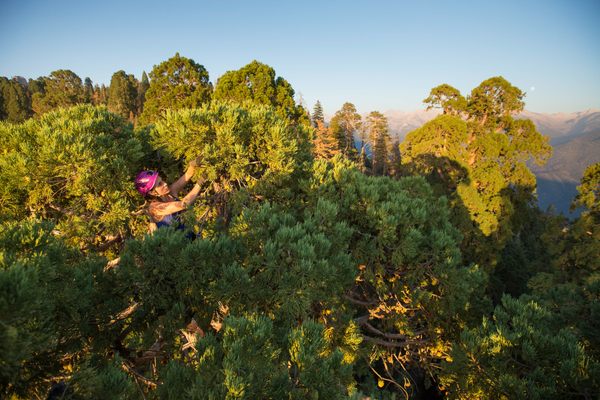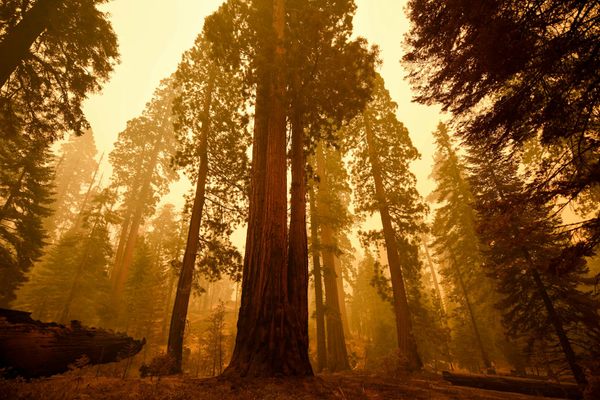Where Will Palm Trees Grow in a Warming World?
As temperatures rise, fronds will fan out in unexpected places.

Fifty-three million years ago, Antarctica wasn’t an unpleasant place for a midwinter sojourn. Back then, its shores and hills were ruffled with palm trees, beeches, and conifers. Winter temperatures hovered near 50 degrees Fahrenheit, so the region wasn’t frost-nipped, even if it was blanketed by near-constant darkness.
Today, of course, the landscape is harsher and notably empty of palms. The trees’ notorious intolerance to chilly conditions makes them useful proxies for estimating historical temperatures. The places fanned by fronds have varied over time. When they turn up in the fossil record, researchers can infer that the region’s temperatures probably once fluctuated within a fairly specific range.
In a new paper published in Nature Scientific Reports, researchers from Columbia University’s Lamont-Doherty Earth Observatory, Brandon University, and the University of Saskatchewan sifted through thousands of data points to untangle the relationship between temperature and distribution of palm trees, and offer hints about where the trees could put down roots in a warming world.
Unsurprisingly, the researchers found that most types of palms are clustered in tropical zones. Most palms flourish in areas with mean annual temperatures between 64 and 82 degrees Fahrenheit, but a few hardy varieties don’t mind damp, cold feet. The Trachycarpus fortunei, or windmill palm, for instance, grows at high altitudes in China. It can withstand temperatures below 35 degrees Fahrenheit, and won’t buckle under the occasional dusting of snow.

The windmill palm is a bit of an outlier, though: In order for most palm trees to flourish, the scientists concluded, the mean temperature of a region’s coldest month can’t dip below 41.36 degrees Fahrenheit. At present, “Washington, D.C. is just a little too cold for palms to successfully propagate in the wild, but … you can expect range expansion in the coming decades as average winter temperatures warm up,” said lead author Tammo Reichgelt in a statement.
In the coming years, more places will cross that temperature threshold: The Intergovernmental Panel on Climate Change, comprised of 1,300 scientists from around the world, estimates that temperatures will climb somewhere between 2.5 and 10 degrees Fahrenheit over the next 100 years. That will probably mean, in turn, that palms will show up in unexpected places.






















Follow us on Twitter to get the latest on the world's hidden wonders.
Like us on Facebook to get the latest on the world's hidden wonders.
Follow us on Twitter Like us on Facebook